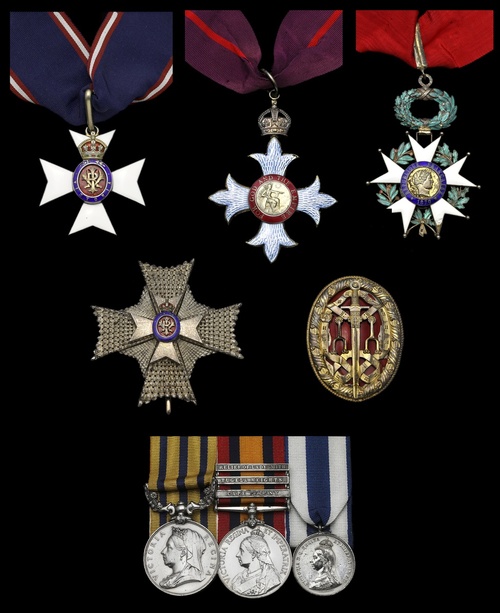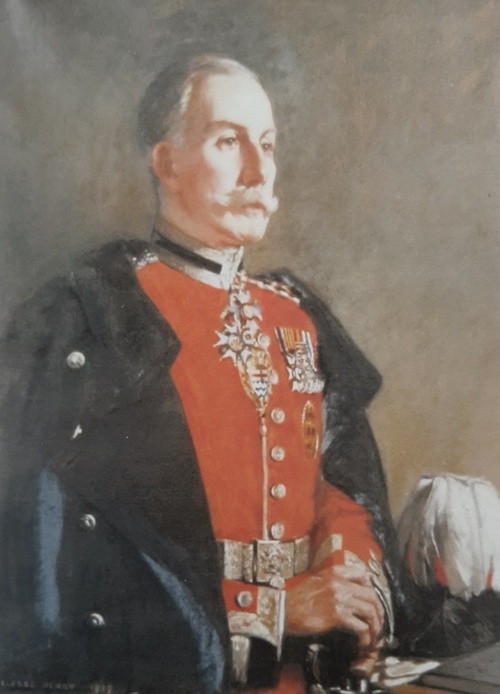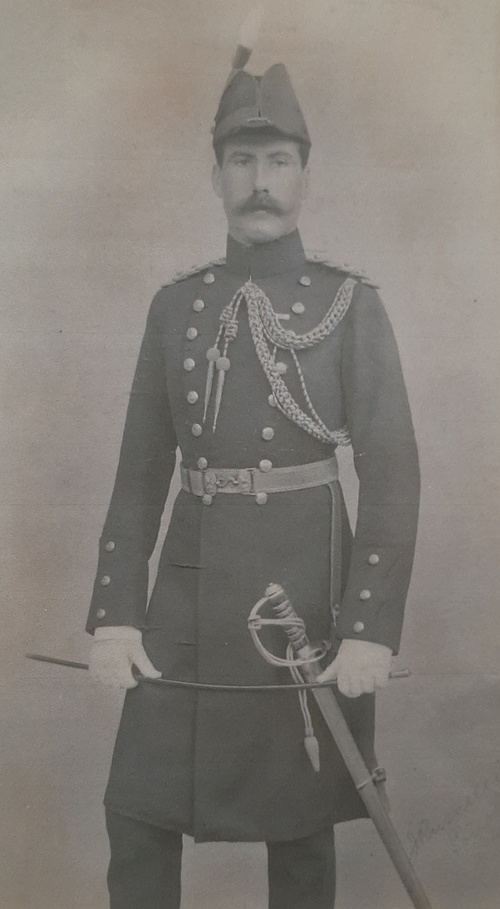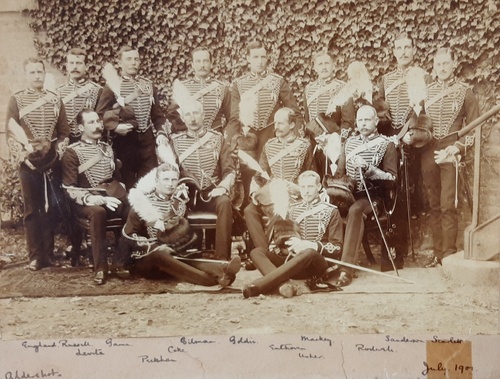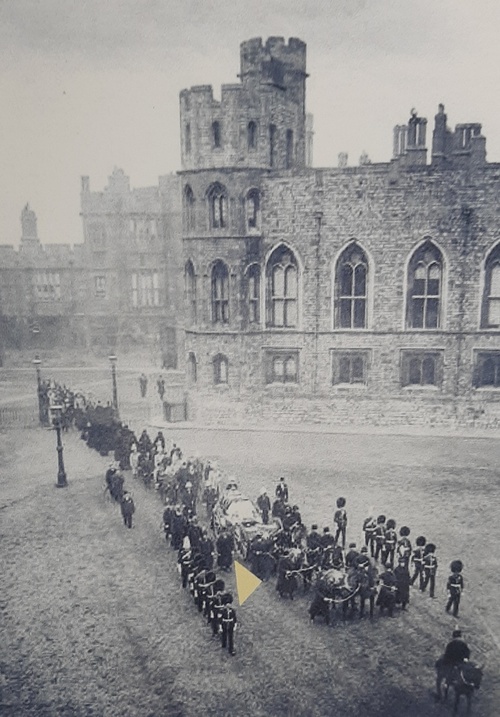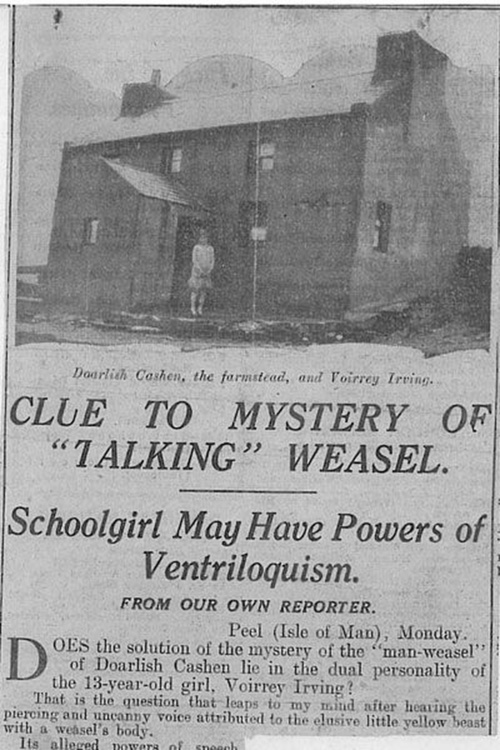Auction: 25001 - Orders, Decorations and Medals
Lot: 321
(x) The unusual and impressive 'Inter-War' K.C.V.O., 'County of London' K.B., 'Great War' C.B.E., O. St. J., Legion of Honour group of eight awarded to Sir C. B. Levita, Royal Horse Artillery, who earned a further 'mention' during the Boer War and commanded the Royal Horse Artillery detachment during the funeral of Queen Victoria, marching alongside the Royal coffin
His remarkable career was overshadowed when he was dragged into a slander case regarding the supposed haunting of the Dalby Farmhouse - a bizarre episode recently brought to film in Nandor Fodor and the Talking Mongoose- Levita was successfully sued for expressing his forthright opinion about the supposed haunting
The Royal Victorian Order, Knight Commander’s (K.C.V.O.) set of Insignia, comprising neck Badge, silver-gilt and enamel, the reverse officially numbered ‘K543’; breast Star, silver, silver-gilt and enamel, with gold pin, the reverse officially numbered, ‘543’; Knight Bachelor’s Badge, 2nd Type breast Badge, silver-gilt and enamel, hallmarks for London 1933, enamel damaged and gilding worn; The Most Excellent Order of the British Empire, Military Division, Commander’s (C.B.E.), 1st Type neck Badge, silver-gilt and enamel, the reverse contemporarily engraved 'Liet Colonel Cecil B. Levita 1919', with neck cravat in Garrard, London case of issue, which is lacking internal pad; The Order of St. John of Jerusalem, Commander’s neck Badge, silver and enamel, in fitted case of issue; British South Africa Company Medal 1890-97, reverse Rhodesia 1896, no clasp (Lieut. C. B. Levita, R.A.); Queen’s South Africa 1899-1902, 3 clasps, Cape Colony, Tugela Heights, Relief of Ladysmith (Major C. B. Levita, M.V.O., R.F.A.); Jubilee 1897, silver (Lieut. C. B. Levita, R.H.A.); France, Third Republic, Legion of Honour, Commander’s neck Badge, silver-gilt and enamel, with neck cravat, minor contact marks and enamel damage, overall very fine (8)
One of only 2 B.S.A.C. medals for Rhodesia issued to the Royal Artillery.
K.C.V.O. London Gazette 1 January 1932.
K.B. London Gazette 1 March 1929.
C.B.E. London Gazette 3 June 1919.
O. St. J. London Gazette 24 June 1930.
Cecil Bingham Levita was born in Manchester on 18 January 1867, the son of Emile and Catherine Levita. He came from a prestigious family of Jewish bankers and scholars related to Elijah Levita, author of Bovo-Bukh. Levita's father was a German-born Banker who emigrated to Manchester whose remarkable career saw him become Director of The Chartered Bank of India, Australia and China, later the Standard Chartered Bank. His mother was the relative of Admiral James Plumridge and was herself a member of the Ree family, a Danish-Jewish family who had created an important shipping business in Denmark.
Service in Africa and Queen Victoria's Funeral
The young Levita studied at the Royal Military Academy, Woolwich and was commissioned Lieutenant on 24 July 1886. Serving in the Matabele conflict in 1896 with that rank, he was one of only two members of the Royal Artillery to be entitled to the Rhodesia 1896 reverse medal for that war.
Levita was later appointed to the Staff of Lieutenant-General Sir Baker Russell as an Aide-de-Camp and Special Service Officer. In this position he was part of the Relief of Ladysmith, including action at Colenso, the operations of 17-24 January 1900, and engagement at Spion Kop, as well as the actions of 5-7 February 1900, the engagement at Vaal Krantz, fighting on the Tugela Heights, and the action at Pieter's Hill. Levita was appointed Deputy Assistant Adjutant General for the 5th Division, Natal Field Force and was 'mentioned' for his work in this role (London Gazette 8 February 1901 refers).
Promoted to Captain on 1 November 1900 and given command of 'N' Battery Royal Horse Artillery, he was an officer commanding the Royal Horse Artillery at the funeral of Queen Victoria. We know the details of this last service due to a letter he wrote to The Times in 1936. Levita mentions posting his battery to the Long Walk for the 81-gun salute and preparing the carriage for the procession, however a disaster occurred at the final moment, his states:
'When the Royal coffin, weighing about 9cwt., had been placed on the carriage, drums began muffled rolls, which reverberated under the station roof, and the cortege started. Actually, when the horses took the weight, the eyelet hole on the splinter bar, to which the off-wheel trace was hooked, broke. The point of the trace struck the wheeler with some violence inside the hock, and naturally the horse plunged. A very short time would have been required to improvise an attachment to the gun-carriage. However, when the wheelers were unhooked the naval detachment promptly and gallantly seized drag ropes and started off with the load. The "gun-carriage" had been specially provided from Woolwich and was fitted with rubber tyres and other gadgets. This was due to Queen Victoria's instructions after seeing a veritable gun-carriage in use at the Duke of Albany's funeral, as also was the prohibition of the use of black horses. On February 4, in compliance with the command of King Edward, I conveyed the royal coffin, on another carriage, from Windsor to the Royal Mausoleum at Frogmore by means of the same detachment of men and horses. I may add that a few days later King Edward told me that no blame for the contretemps attached to the Royal Horse Artillery by reason of the faulty material that had been supplied to them.'
The Great War
Appointed a Member of the Royal Victorian Order for his service during the funeral Levita was further promoted Major on 5 January 1902. He remained in service for some time but retired in October 1909, standing for Parliament the next year for St. Ives, Cornwall in 1910 but was unsuccessful. The next year, however, he was successfully elected to the London County Council as a Municipal Reformer, later returning to military service with the Reserve of Officers on the outbreak of the Great War. Appointed an embarkation officer in 1914 he was later transferred to become General Staff Officer Grade III on 22 February 1915.
Levita was advanced G.S.O. Grade II on 22 September 1915 and the next month Grade I on 22 October. Promoted Honorary Lieutenant-Colonel on 1 March 1917, his M.I.C. makes no note of any medals being issued for this service. However, it does state that he was serving at 'Port: No 1 Southampton'. After the end of the war Levita was appointed a Commander of the Order of the British Empire as a reward for his services.
Politics, Libel and a Talking Mongoose
Levita once again returned to politics, being appointed Deputy Lieutenant of the County of London and a J.P. in 1924, a role he would hold for some years. Later sitting as chairman on the housing committee and later as chairman of the London County Council from 1928-1929, his appointment as a Knight Batchelor derived from this role. The award of the French Legion of Honour also followed in 1929. One of his main areas of interest was the idea of film being used for educational uses, he was also the driving force behind the foundation of the King George Hospital, Ilford, this last being the reason for his advancement to the K.C.V.O.
His interest in film proved to be his downfall however due to a forthright statement made in 1936 about Richard Stanton Lambert, who was working alongside Levita's wife in the British Film Institute. Lambert was the founding editor of The Listener, published by the B.B.C. and an influential man in the world of British broadcasting. Over a lunch with the Assistant Controller of Programmes at the B.B.C., William Murray, Levita stated that he believed Lambert had been influenced by the Dalby Farmhouse haunting.
The haunting was a sensation at the time, a family claimed to be visited by a talking mongoose which claimed to be eighty years old, named Gef and originally born in Delhi. It was investigated by a number of sceptics and alleged paranormal experts to little gain, one of these was Harry Price. Levita asserted that Lambert had fallen under Price's influence, believed in the existence of Gef and had three times moved house to avoid the 'evil eye'.
Lambert discovered the claim and sued Levita, successfully, being awarded damages of £7,500 plus costs, a substantial sum at the time. It is unclear what caused Levita to make the claim however there is a suggestion that his wife had clashed with Lambert over the appointment of people to the British Film Institute who viewed film as commercial rather than educational. The Dalby Farmhouse haunting has been the subject of a recent film in 2023, starring Simon Pegg.
Lavita died on 10 October 1953, notably his niece, Enid, married Ewan Cameron, and is the grandmother of the former Prime Minister, David Cameron; sold together with a substantial amount of copied research and an archive of original material including:
i)
Documents of issue for the Legion of Honour, O. St. J., C.B.E. and the recipient's initial appointment to the M.V.O.
ii)
An appointment on vellum confirming the recipient in the position of Deputy Lieutenant.
iii)
The recipient's initial document of Commission in the Royal Horse Artillery.
iv)
A portrait photograph of the recipient in uniform and a group photograph of the recipient with several fellow officers at Aldershot.
v)
A silver presentation trowel, hallmarked London 1927, with ivory handle, inscribed 'This trowel was used by Lieut-Colonel Sir Cecil B. Levita C.B.E., M.V.O., D.L., J.P., L.C.C. when laying a foundation Stone of the King George Hospital, Ilford on the 5th July, 1930.'.
Subject to 5% tax on Hammer Price in addition to 20% VAT on Buyer’s Premium.
Estimate
£3,000 to £4,000
Starting price
£2400

